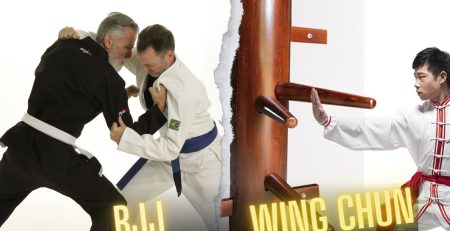The Significance of BJJ Gi Colors – What Color Gi Should I Get for Brazilian Jiu-Jitsu?
Table of Content:
- Introduction
- Gi Color Meaning in Brazilian Jiu Jitsu
- History of Gi Colors in Brazilian Jiu-Jitsu
- Traditional Gi Colors
- Modern Trends and Flexibility in Jiu Jitsu Gi Colors
- Significance of Gi Colors in BJJ Culture
- Choosing the Right Gi Color for You
- Practical Considerations: Maintenance and Care
- Conclusion
Introduction
The Brazilian Jiu-Jitsu (BJJ) community is rich with tradition, symbolism, and a deep appreciation for heritage. One often-overlooked aspect of this martial art is the color of the gi, the traditional uniform worn by practitioners. In this comprehensive exploration, we delve into the history, evolution, and significance of BJJ gi colors, shedding light on their importance within the vibrant tapestry of BJJ culture.
Gi Color Meaning in Brazilian Jiu Jitsu
Contrary to what some might believe, the color of a jiu jitsu gi holds no intrinsic meaning. While BJJ belt colors are significant in indicating a practitioner’s skill level, gi colors do not carry such importance. However, the history and tradition behind gi colors are worth exploring.
Traditionally, white is the most common gi color in martial arts with Japanese roots, symbolizing “purity” or “truth.” This is likely why it was adopted for judo and jiu jitsu. Blue was later introduced to distinguish competitors during judo matches, a practice that BJJ adopted as well. The International Brazilian Jiu Jitsu Federation (IBJJF) allows white, blue, and black gis, although in major competitions, black belt competitors must wear white or blue gis in the finals.
While some academies enforce a “white gi only” policy, most are more flexible, allowing a variety of colors. Practitioners can be seen wearing gis in colors ranging from grey and green to pink and even tie-dyed patterns. The choice often comes down to personal preference, though it’s worth noting that white gis are harder to keep clean.
Ultimately, whatever gi color you choose, the key is to focus on your training and enjoy the journey.
History of Gi Colors in Brazilian Jiu-Jitsu
To understand the significance of gi colors in BJJ, it’s essential to trace their origins. The roots of BJJ can be traced back to Judo, where founder Jigoro Kano introduced the concept of colored belts to signify practitioners’ skill levels. However, in the early days of BJJ, the gi itself remained primarily white, a tradition inherited from Judo. Over time, as BJJ evolved into its own distinct martial art, practitioners began to explore variations in gi colors, leading to a rich tapestry of hues within the community.
As BJJ spread across the globe, practitioners from different regions began to experiment with new colors and designs, reflecting their cultural influences and personal preferences. While white and blue remained the predominant colors in traditional BJJ academies, practitioners in Western countries started to embrace a wider spectrum of colors, ranging from bold reds and blacks to vibrant purples and greens. This diversity in gi colors not only added visual flair to the mats but also contributed to the sense of inclusivity and creativity within the BJJ community. Bravo BJJ is a known brand offering BJJ gi at a discount price, so don’t miss this limited-time offer to elevate your Brazilian Jiu-Jitsu game with a top-tier gi at a fantastic price. Shop now and roll in style and confidence!
Traditional Gi Colors
White and blue are the cornerstone colors of traditional BJJ gis. These colors have deep symbolic significance, rooted in the traditions of Japanese martial arts. White represents purity, humility, and a beginner’s mindset, embodying the journey of continuous learning and growth that is central to BJJ philosophy. Blue, on the other hand, is associated with perseverance, wisdom, and the intermediate stages of mastery. Together, these colors form the foundation of BJJ gi culture, reflecting the art’s rich heritage and values.
In Japanese culture, the color white has long been associated with purity, cleanliness, and simplicity. It is often used in traditional martial arts uniforms, such as judo and karate gis, to symbolize the practitioner’s commitment to discipline and self-improvement. In the context of BJJ, the white gi serves as a blank canvas upon which the practitioner can embark on their journey of learning and growth. It represents the humility and openness required to absorb new techniques, refine skills, and overcome challenges on the path to mastery.
Made from premium materials built to withstand the toughest training sessions, this gi is a must-have for any serious practitioner. Explore our collection of Women’s BJJ Gi and elevate your performance on the mat today!
Modern Trends and Flexibility in Jiu Jitsu Gi Colors
In recent years, the landscape of jiu jitsu gi colors has undergone a significant transformation. With the proliferation of modern BJJ academies and the rise of innovative gi brands, practitioners now have more options than ever before. While traditional white and blue gis remain popular, many academies now embrace a more flexible approach to gi colors, allowing practitioners to express their individuality and personal style. From vibrant hues to striking patterns, the modern BJJ gi market offers something for every taste and preference.
Significance of Gi Colors in BJJ Culture
Beyond mere aesthetics, gi colors hold profound significance within BJJ culture. The color of a practitioner’s gi is often seen as a reflection of their personality, values, and journey in the art. For some, wearing a traditional white or blue gi is a nod to tradition and respect for the art’s roots. For others, experimenting with non-traditional colors is a way to stand out and make a statement. Whatever the choice, gi colors serve as a visual symbol of camaraderie and belonging within the BJJ community.
Choosing the Right Gi Color for You
When selecting a gi color, there are several factors to consider. Firstly, it’s essential to adhere to your academy’s guidelines regarding gi colors for training and competition. While many academies allow a wide range of colors, some may have specific requirements or restrictions. Additionally, consider your personal style and preferences. Do you prefer the classic simplicity of white and blue, or are you drawn to more unconventional colors and designs? Ultimately, the choice of gi color should reflect your personality and values while respecting the traditions of BJJ.
Once you’ve found your ideal gi, ensure it fits just right by learning more about “how should a bjj gi fit” in this informative article how should a bjj gi fit. If you’re on a budget, don’t worry – you can still find high-quality options without breaking the bank.
Practical Considerations: Maintenance and Care
While gi colors may be a matter of personal preference, it’s important to consider practical factors when choosing a gi color. Darker colors, such as black or navy, may be more forgiving in terms of hiding stains and wear, while lighter colors like white may require more frequent washing to maintain their appearance. Additionally, consider the climate and environment in which you train. If you frequently train outdoors or in hot, humid conditions, lighter colors may be more comfortable and practical.
If you’re unsure about which size to choose, consult this helpful bjj gi size chart for guidance on finding the perfect fit. With these resources, you’ll be well-equipped to find the ideal BJJ gi for your training sessions and competitions.
Conclusion
In conclusion, the color of the gi is far more than just a fashion statement in the world of Brazilian Jiu-Jitsu. It is a reflection of tradition, heritage, and personal expression within the vibrant tapestry of BJJ culture. Whether you prefer the timeless simplicity of white and blue or the bold creativity of non-traditional colors, the most important thing is to wear your gi with pride, respect, and a deep appreciation for the art of Brazilian Jiu-Jitsu.
FAQs Related to what does Brazilian Jiu Jitsu Gi Colors means
What do different gi colors mean in BJJ?
In Brazilian Jiu Jitsu (BJJ), gi colors do not carry specific meanings or rankings. While traditional white is often associated with purity and beginners, and blue is used to differentiate competitors, colors like black, grey, and even pink are primarily a matter of personal preference. The significance of gi colors is less about symbolism and more about tradition and personal style.
Can I wear any color gi in BJJ?
Most BJJ academies are flexible about gi colors, allowing practitioners to wear various colors including white, blue, black, grey, green, pink, and more. However, some academies might have specific rules, such as requiring white gis during class. For major competitions, the International Brazilian Jiu Jitsu Federation (IBJJF) typically restricts black belt competitors to white or blue gis in the finals.
What do the colors of the BJJ belts mean?
BJJ belt colors signify a practitioner’s rank and level of expertise. The standard progression is white, blue, purple, brown, and black, with each belt representing different stages of skill and experience. Beyond black belt, there are additional degrees and coral belts for advanced practitioners.
Does BJJ gi color matter?
In terms of official BJJ ranking and competition, gi color does not matter. The primary focus is on the practitioner’s skills and belt rank. Gi color is mainly a matter of personal preference and tradition. However, for competitive events, the IBJJF may have specific regulations regarding gi colors.
What color BJJ gi should I get?
For beginners, a white gi is a traditional and safe choice. It’s often the most affordable and is widely accepted in academies and competitions. As you progress, you can choose other colors based on your personal preference or academy guidelines. Just make sure your gi meets any specific requirements set by your academy or competition rules.
Karate gi color meaning
In Karate, gi colors can have different meanings. Traditionally, Karate gis are white, symbolizing purity and discipline. Some schools may use different colors to signify different levels or ranks, but this is less common and not standardized. Generally, the focus is more on the practitioner’s skill and progression than on the gi color.
What color gi for BJJ beginner?
For beginners in BJJ, a white gi is often recommended. It is the traditional color and is usually the most affordable and widely accepted in most academies. As you gain more experience and if allowed by your academy, you can explore other colors that suit your personal style.
Why are traditional BJJ gi colors limited to white and blue?
The traditional gi colors of white and blue have roots in Japanese martial arts, particularly judo, from which Brazilian Jiu-Jitsu evolved. These colors were initially chosen for practical reasons, such as ease of maintenance and visibility during training and competitions. Over time, they became deeply ingrained in BJJ culture and are now widely recognized as symbols of tradition and respect for the art’s heritage.
Are there any restrictions on gi colors for BJJ competitions?
While some BJJ competitions may have specific guidelines regarding gi colors, the International Brazilian Jiu-Jitsu Federation (IBJJF), the largest governing body for BJJ competitions, generally allows white, blue, and black gis for competitors. However, it’s essential to check the rules of individual competitions or consult with your academy to ensure compliance with any specific requirements.
Can I wear a non-traditional gi color for training and competitions?
In many modern BJJ academies, practitioners have the freedom to choose gi colors that reflect their personal style and preferences. While traditional white and blue gis remain popular choices, non-traditional colors such as black, navy, grey, and even vibrant hues like pink or purple are increasingly accepted. However, it’s always a good idea to check with your academy or competition organizers to ensure that your chosen gi color complies with any guidelines or regulations.
How do I choose the right gi color for me?
When selecting a gi color, consider factors such as your academy’s guidelines, personal style, and practical considerations. If your academy has specific requirements, such as white or blue gis only, it’s best to adhere to those guidelines. Otherwise, feel free to choose a color that reflects your personality and preferences. Keep in mind factors such as maintenance and visibility, especially if you plan to compete or train in different environments.
Are there any cultural or symbolic meanings associated with specific gi colors in BJJ?
While the traditional gi colors of white and blue have historical and symbolic significance in Japanese martial arts, other colors may carry personal or cultural meanings for individual practitioners. For example, some practitioners may choose black gis as a symbol of strength and resilience, while others may opt for colors that represent their national flag or cultural heritage. Ultimately, the meaning of a gi color is subjective and may vary from person to person.














Leave a Reply
You must be logged in to post a comment.